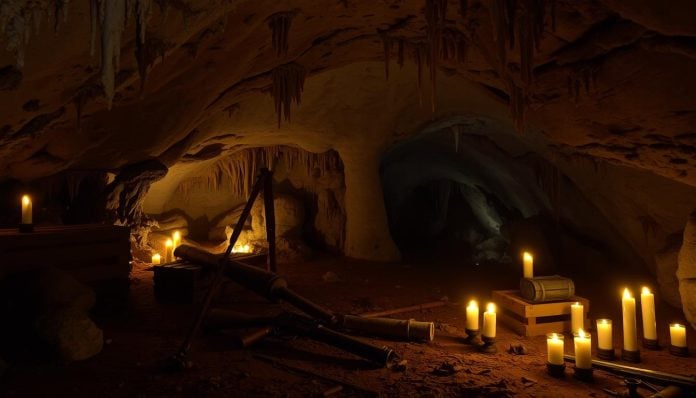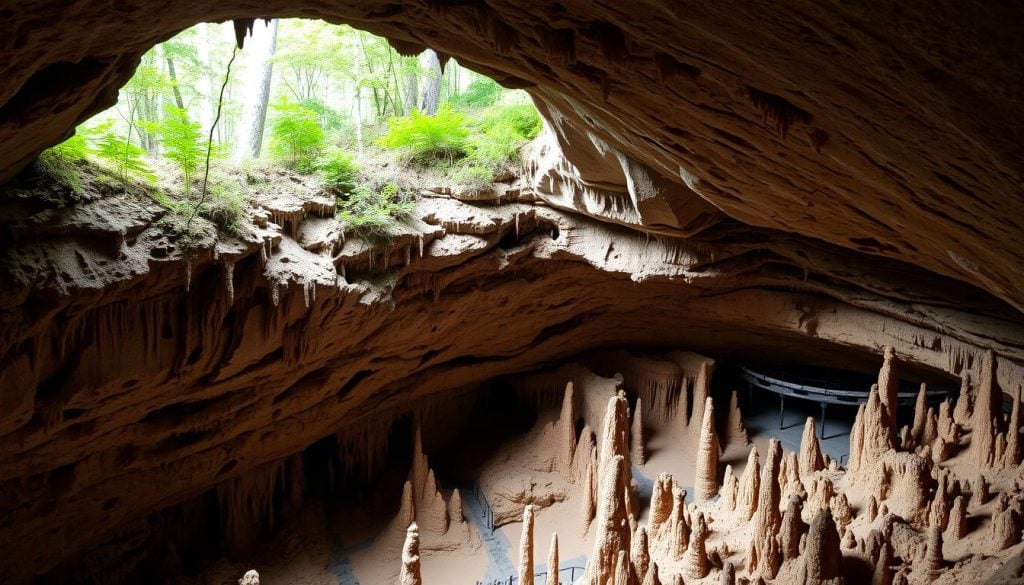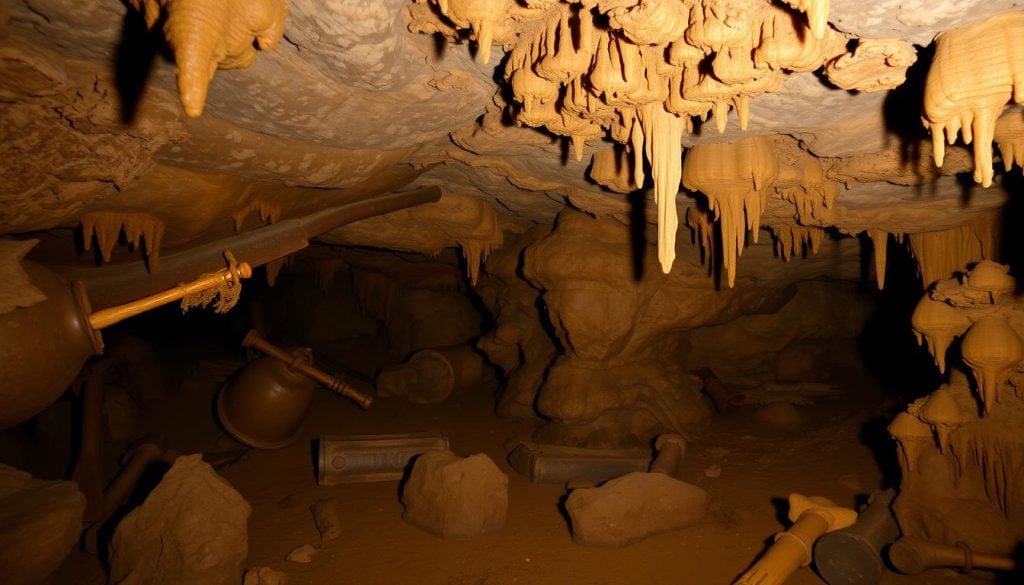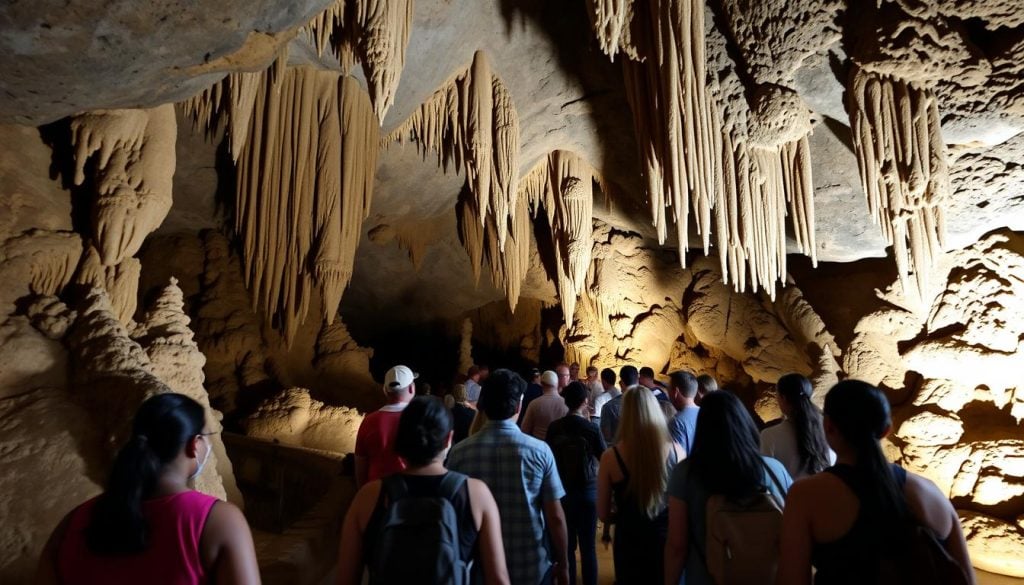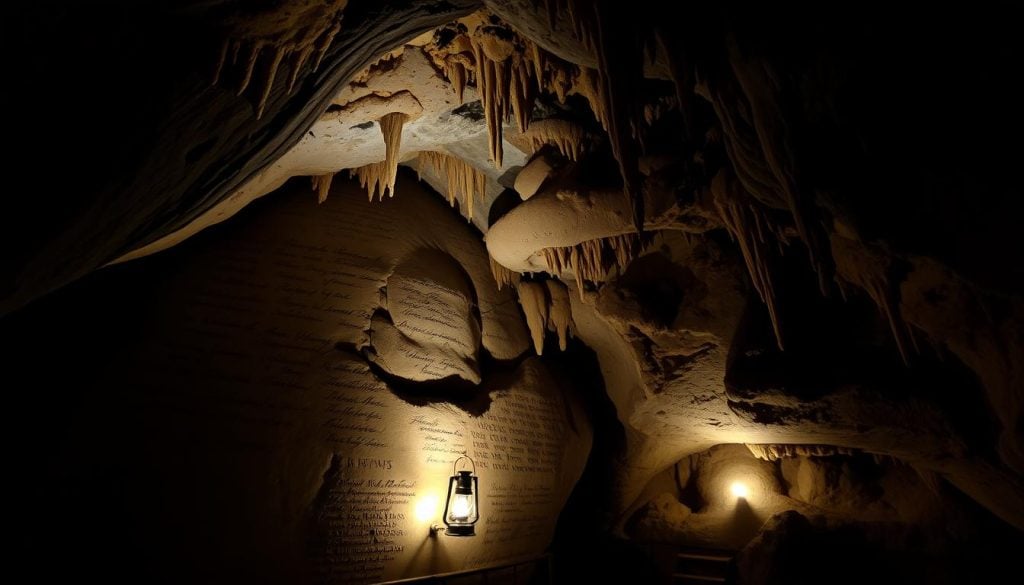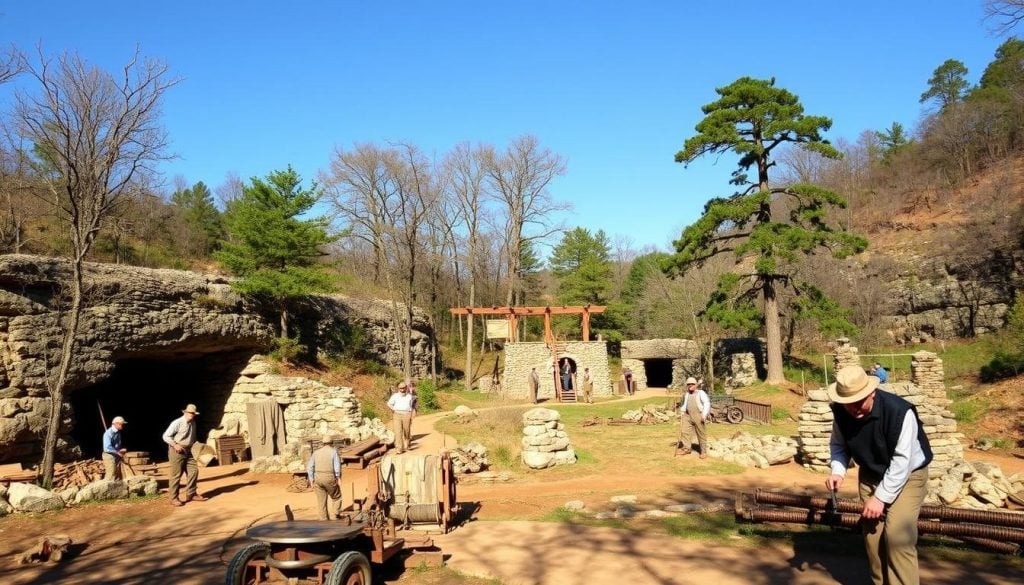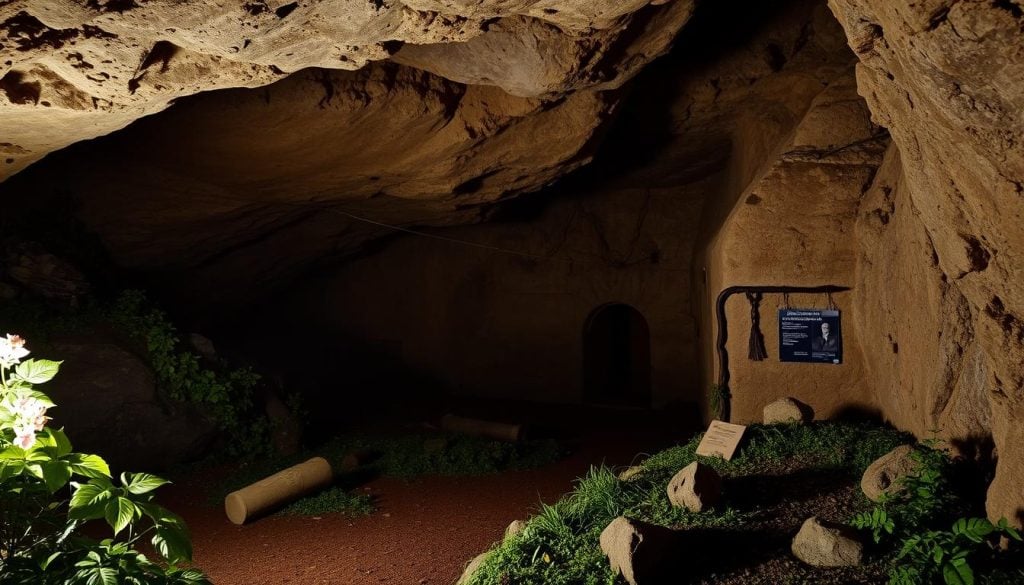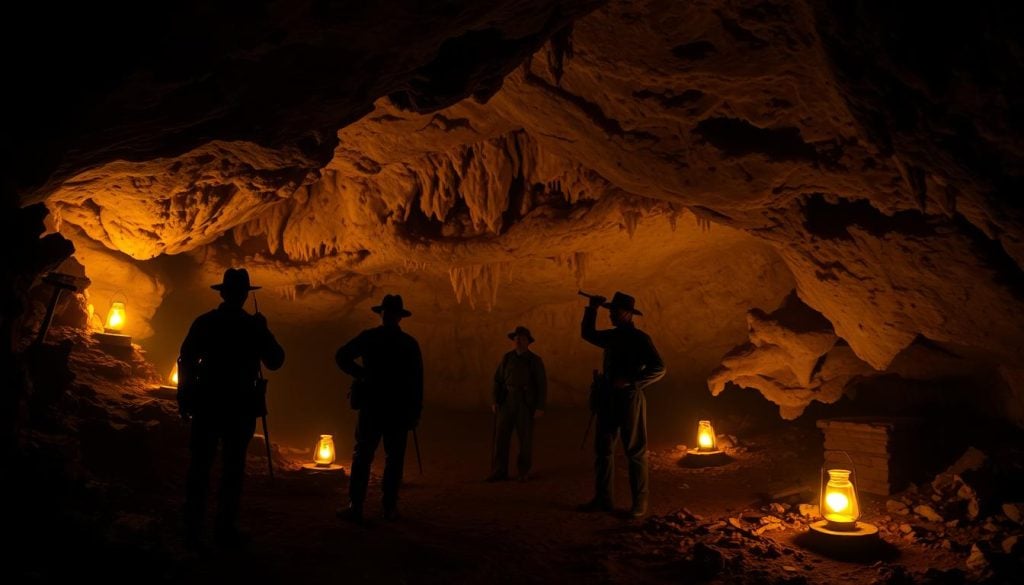Did you know Mammoth Cave has a rich Civil War history beneath its surface? It’s more than just a natural wonder. This park was crucial during a very troubled time in American history. Dive into this article to explore the stories of soldiers and civilians connected by Mammoth Cave during the war. You’ll discover how important Mammoth Cave was back then.
The Formation and Early History of Mammoth Cave
Mammoth Cave started to form about 10 million years ago. It began when rainwater seeped into the ground. This water slowly eroded the limestone, creating a huge network of tunnels.
The first explorers of Mammoth Cave were Native Americans. They used the cave for mining minerals around 5,000-2,000 BCE. This shows how long humans have been connected to this incredible cave.
Later, European settlers became interested in Mammoth Cave. Daniel Boone, a famous frontiersman, helped make the cave known in the 1770s. The cave was named in 1810, which was an important moment in its history. By the 1810s, people started to realize how big the cave really was.
Before the Civil War, Mammoth Cave was important for its saltpeter. Saltpeter is used to make gunpowder, which was needed during the War of 1812. This marked the beginning of the cave’s role in American history.
Saltpeter Mining in Mammoth Cave
Saltpeter mining in Mammoth Cave was vital during the War of 1812. It was key in making gunpowder. The cave’s unique formations were perfect for getting this important mineral.
Enslaved African Americans worked hard in the cave to get saltpeter. They worked long hours in the cold and dark. Their hard work helped the military, showing their big role in fighting for freedom.
Later, Mammoth Cave became a place tourists visit. This change shows the complex history of the place. It is a reminder of those who helped the freedom fight but weren’t free themselves.
African American Contributions to Mammoth Cave’s History
African Americans have been key in Mammoth Cave’s history. They first worked at the cave during its saltpeter mining days. Here, enslaved people labored in tough conditions. After the Civil War, many became important in turning the cave into a tourist spot.
Stephen Bishop was a standout among the early African American guides. His deep knowledge and charm boosted Mammoth Cave’s popularity. Because of African Americans like him, Mammoth Cave became a noted place in Kentucky.
The stories of these guides and African Americans’ efforts are now a big part of the park’s history. When you visit, their tales add depth, showcasing Mammoth Cave’s rich heritage.
| Guide Name | Role | Significance |
|---|---|---|
| Stephen Bishop | Lead Guide | Elevated the cave’s status and facilitated tourism growth |
| Other Guides | Support Guides | Assisted in cave tours and educational experiences |
Civil War History of Mammoth Cave National Park
Mammoth Cave was a significant place during the Civil War. It wasn’t a place for battles, but a refuge for soldiers. These soldiers found peace away from the fighting. The cave hosted soldiers from both sides, showing the diverse experiences of war.
Significance of Mammoth Cave during the Civil War
Mammoth Cave was a sanctuary during the Civil War. Inside, soldiers found a cool and comforting space. The cave’s beauty stood in sharp contrast to the war outside. It was a place for reflection and friendship among the war-weary.
Soldier Experiences in the Cave
Soldiers at Mammoth Cave shared both happiness and sadness. During quiet times, they told stories and formed bonds. They left their marks on the walls as a way of expressing themselves. These writings turn the cave into a record of their feelings and stories.
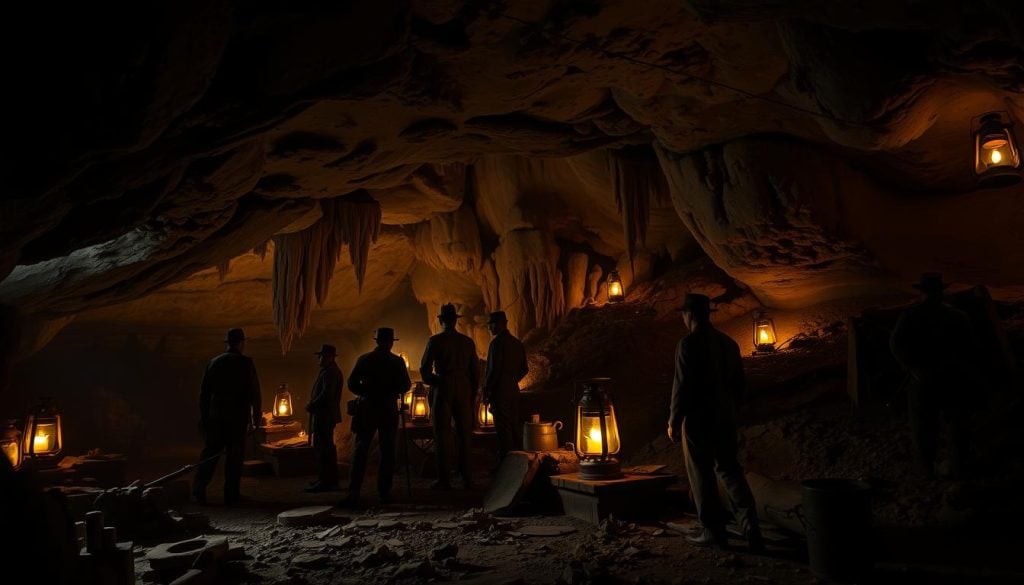
Inscription Discoveries from the Civil War Era
Mammoth Cave’s exploration has shed light on its Civil War role. Recent digs have found many Civil War-era signatures. These signatures create a personal link to soldiers who found shelter in the cave.
Documenting Civil War Signatures
Recording Mammoth Cave Civil War signatures helps us grasp the experiences of its visitors. These marks remind us of people who left a sign of their presence in hard times. Experts have carefully preserved these names, bringing out the stories of those who could have been lost in history.
Graffiti as Historical Records
What some saw as mere graffiti is now valued as a key historical document. The engravings in Mammoth Cave tell stories of soldiers who sought its safety. Each mark uncovers feelings, friendships, and struggles faced during the Civil War.
The Role of African American Guides Before and After the Civil War
The story of African American guides is key to Mammoth Cave’s history. These guides, often descended from slaves, added much to the cave’s story and its draw for visitors. Their work in the 1800s showed the cave’s special points and their own ability to overcome tough times.
Influential Guides in the 19th Century
Mat and Nick Bransford stand out in Mammoth Cave’s past. These famous black guides knew the cave’s twists and turns well. They taught visitors about the cave’s rocks and history. Their story is a strong example of overcoming racial divides back then.
Transitioning to a Tourist Destination
Black guides were key in making the cave a top place to visit. With their great storytelling and guiding, they spotlighted the cave’s importance. This change kept the cave’s history alive and brought jobs to the local black community. It shows how society started to value a shared history.
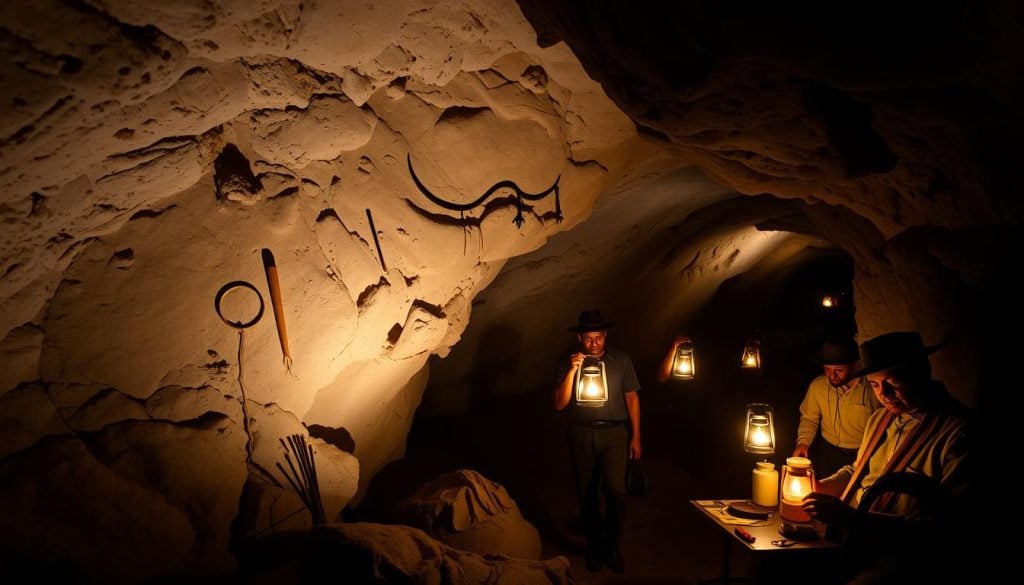
Civilian Conservation Corps and the Park Development
The Civilian Conservation Corps (CCC) deeply impacted Mammoth Cave National Park’s development history. It started during the Great Depression. Its goal was to provide jobs and enhance public greenspaces. The CCC worked on many projects, making the park better for visitors.
Impact of the CCC on Mammoth Cave
Let’s explore the CCC’s impact on Mammoth Cave through some key developments:
- Trail Construction: The CCC built and kept up trails, making it easier to tour the caves.
- Facilities Development: They built visitor centers and campgrounds, improving the park experience.
- Environmental Conservation: Their work included planting trees and controlling erosion, showing their care for the environment.
- Workforce: Many African American workers helped, adding to their role in Mammoth Cave’s history.
The work of the Civilian Conservation Corps has left a lasting mark on the park. Thanks to their hard effort and dedication, Mammoth Cave is beautiful and welcomes those looking to learn and have fun.
| Development Aspect | Description | CCC Contributions |
|---|---|---|
| Trail Construction | Paths leading to and within the cave for better access. | Built and maintained over 20 miles of trails. |
| Visitor Facilities | Areas for tourists to gather and plan visits. | Constructed visitor centers and campgrounds. |
| Environmental Initiatives | Efforts to preserve the park’s natural habitats. | Engaged in reforestation and soil conservation practices. |
Cultural Significance of Mammoth Cave Post-Civil War
After the Civil War, Mammoth Cave became an important cultural spot. It allowed African Americans to enjoy leisure and tourism again. The Bransford Summer Resort opened its doors to black travelers, creating a welcoming space.
This resort highlighted Mammoth Cave’s stunning geological features. It changed how society saw these natural wonders. Families could gather, relax, and share stories, making the cave even more significant.
As tourism at Mammoth Cave grew, locals played a big role in its promotion and preservation. Their efforts ensured Mammoth Cave stayed a treasured place for visitors.
Modern Interpretations of Civil War History at Mammoth Cave
Mammoth Cave gives us a special chance to dig into modern interpretations Civil War Mammoth Cave history. It now stands as a key educational site. By exploring its rich past, visitors understand the critical roles played by various groups, especially African Americans.
There’s a big push for contemporary engagement with history here. Through tours, workshops, and local events, people can learn about the Civil War’s impact. These activities keep the stories alive and help us see how society was back then.
Working with local communities and historians makes Mammoth Cave’s programs even richer. By sharing personal tales, it opens up a wider conversation about the Civil War. This brings people together, encouraging them to think deeply about those turbulent times.
| Modern Interpretation Initiatives | Description | Purpose |
|---|---|---|
| Guided Tours | Interactive experiences exploring Civil War history through narratives. | Educate visitors on historical events and their impacts. |
| Workshops | Hands-on programs that delve into historical artifacts and documents. | Encourage participation and active learning about the Civil War. |
| Community Events | Activities that promote local history and culture. | Strengthen bonds within the community and foster historical appreciation. |
Conclusion
Mammoth Cave’s history is a tale of struggle and resilience. This tale spans one of America’s most turbulent times. The Civil War’s impact on Mammoth Cave National Park shows the cave as a safe place and resource. It also uncovers the real-life stories of people who walked its dark paths. Your walk through the cave is a step into its lasting legacy.
Exploring the stories of African American contributions sheds light on freedom, community, and survival. These themes deeply enrich your visit. They turn a simple trip into a deep dive into America’s rich and complex history. Mammoth Cave’s stories make you reflect and appreciate the past. They honor the hardships overcome and victories won.
Recognizing Mammoth Cave’s legacy and its Civil War importance deepens your connection with the park. Each visit becomes a chance to link with history. It keeps the stories of the past alive and relevant for future generations.

































